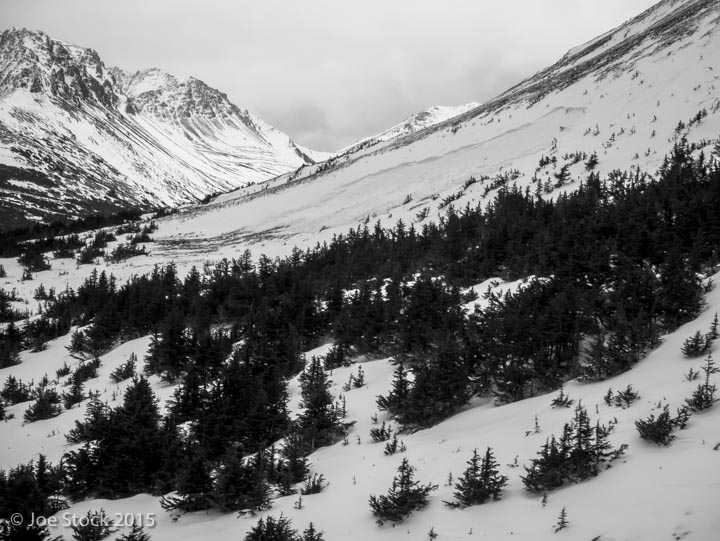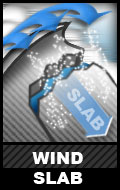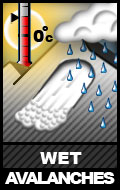Weekend Avalanche Outlook
Avalanche danger in Chugach State Park will be elevated this weekend, and exists primarily in the form of wind and persistent slabs in the alpine. Wet avalanches will also be possible, with this problem increasing from midday through the afternoon.
Avalanche Problems:
Click here to learn more about wind slab avalanches
Touchy to stubborn wind slabs up to D2 in size will be possible in specific areas on terrain steeper than 35 degrees: leeward (primarily west to north) aspects and cross-loaded terrain (e.g. gully sidewalls) above 2500′.
After last weekend’s quiescent and pleasant weather, winds picked up Tuesday and have blown strong at times through the week (particularly from the SE Wednesday night into Friday).
Wind slabs that have developed will become more stubborn over time and, while less likely, more difficult to manage due to potentially releasing above the trigger. Practicing safe travel protocols (as you always should!) and assessing the snowpack as you travel will be especially important. Be mindful of obvious signs of instability like recent avalanches, collapsing or whumphing, hollow snow, heavily wind loaded terrain features, and blowing snow actively loading leeward deposition areas. Pole probing, handpits, test slopes, and a quick snowpit with Extended Column Test (ECT) will be effective means for better understanding potential wind slab problems.
As we move to discussion of our secondary avalanche problem, it’s important to note that the snowpack is generally exhibiting 3-5 lemons (in areas where there actually is a snowpack). Larger wind slabs are likely to fail on persistent weak layers buried deeper in the snowpack as these layers are stressed from the weight of additional snow due to wind loading. There is the possibility of extensive propagation from adjacent, lower angle terrain. The below photo is from March 18, but provides an example. This avalanche was triggered at ~2500′ on a NNE aspect near Flattop. The party was digging a snowpit on low angle terrain (about 25 degrees) when they remotely triggered this avalanche (likely on basal facets), with the fracture they initiated propagating up slope from them and causing a wind slab to release from where the slope angle reached ~35 degrees.
Click here to learn more about persistent slab avalanches
Stubborn persistent slabs up to D2.5 in size will be possible to trigger in isolated areas above 2500′ on terrain steeper than 35 degrees. While these are relatively unlikely, the probability of triggering is highest from thinner and weaker areas where a deeper snowpack (capable of harboring larger slabs) exists.
These avalanches will be larger, more difficult to manage, and are relatively elusive in regard to assessment. They may allow numerous potential triggers to pass without incident before unexpectedly releasing. They have the potential to release well above the trigger, and to propagate widely, making escape difficult.
Safe travel protocols and more thorough snowpack analysis will be necessary for dealing with this problem. Digging a snowpit, analyzing the layers (look for lemons as mentioned above), and conducting an Extended Column Test (ECT) will help you better understand this problem.
Click here to learn more about wet avalanches
Small natural and human triggered wet avalanches (up to D2 in size but generally D1) will be possible in specific areas (solar aspects: south and west) above 3000′ later in the day (especially the sunnier it is), primarily in the form of point releases or loose wet avalanches (“sluffs“) on terrain steeper than 35 degrees. Naturals will most likely occur from steep, thin, and rocky areas of the snowpack.
Watch for snow becoming wet and heavy. Danger will rise as ski penetration increases more than a few inches, or if snow is noticeably saturated while hiking.
Special Announcement
The Anchorage Avalanche Center and Alaska Avalanche Information Center will be providing a FREE backcountry safety and avalanche awareness program hosted at Arctic Valley Ski Area this weekend: Sunday, March 29 from 10am-2pm.
Topics include general backcountry safety, winter backcountry preparedness, and avalanche awareness: recognizing avalanche terrain, red flags (obvious signs of unstable snow), and terrain traps; safe travel protocols and single burial recovery demo; basic snowpack stability assessment; the opportunity to practice with beacon, shovel, and probe; and more!
No prerequisites or specific equipment necessary. Just come prepared to be outside for a few hours, following a classroom session at the Arctic Valley lodge. If you have winter backcountry travel gear (skis, snowshoes, etc.) do bring it!
There will be free SWAG from Anchorage Avalanche Center sponsors!!
This program made possible to the general public, FREE of charge, by the Alaska Department of Public Safety.



